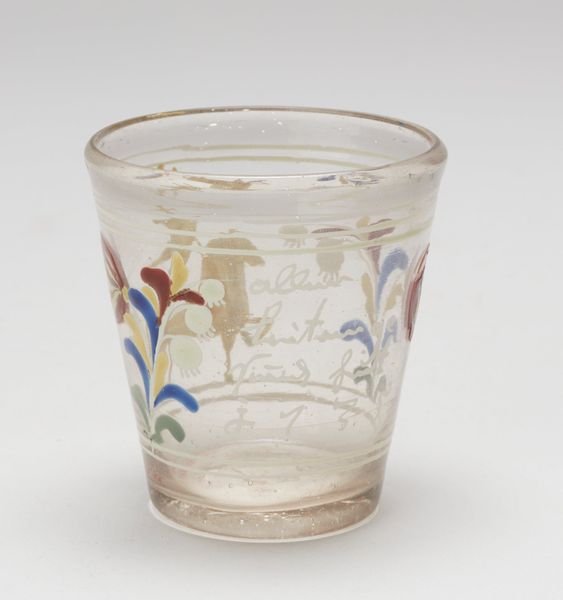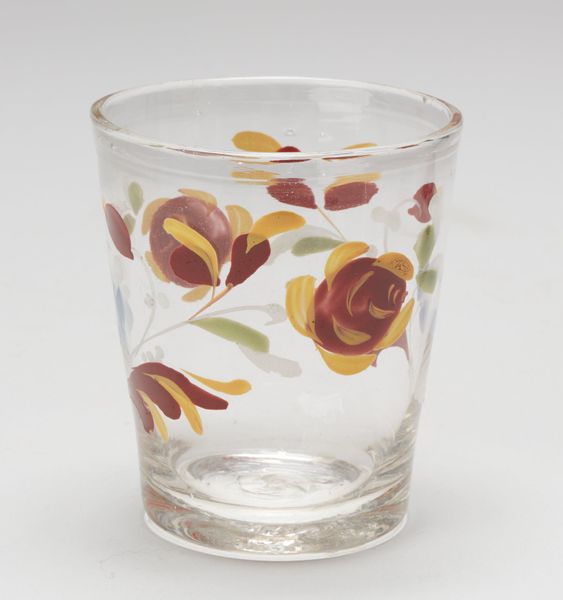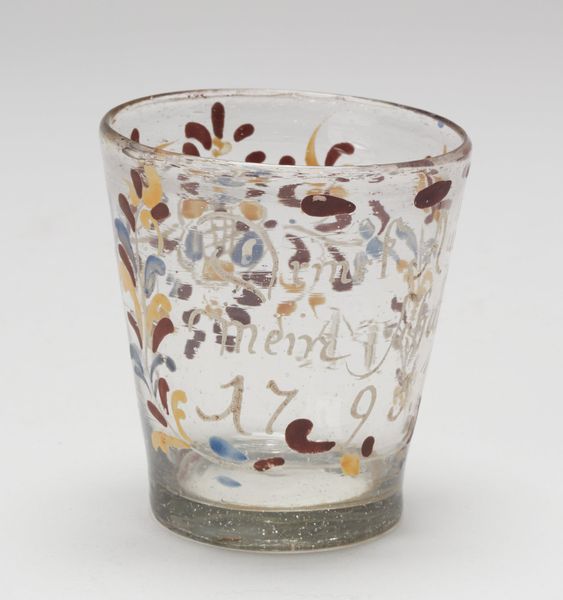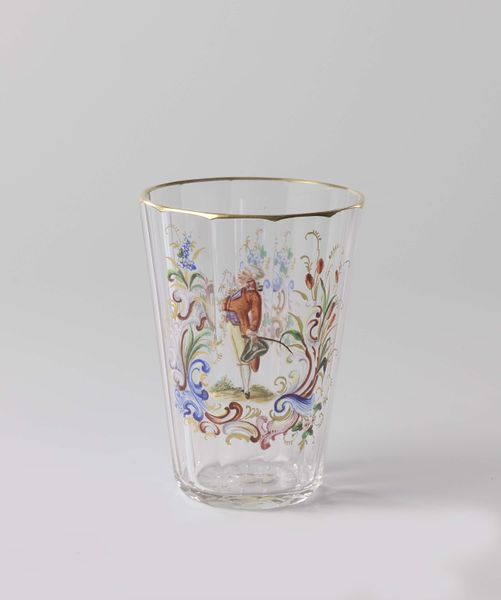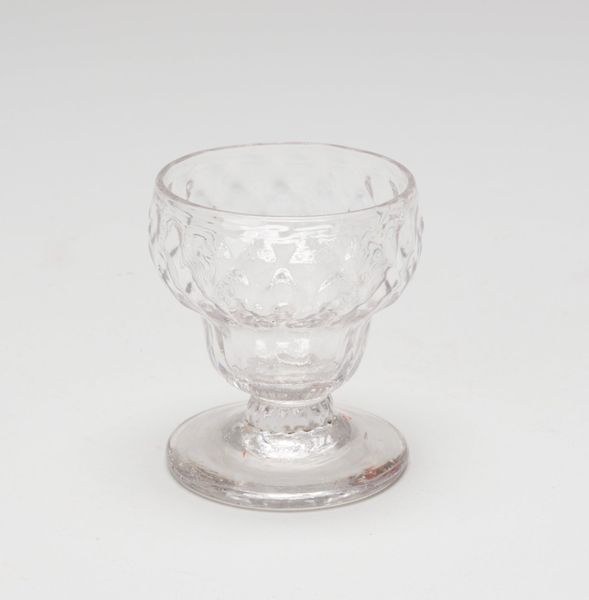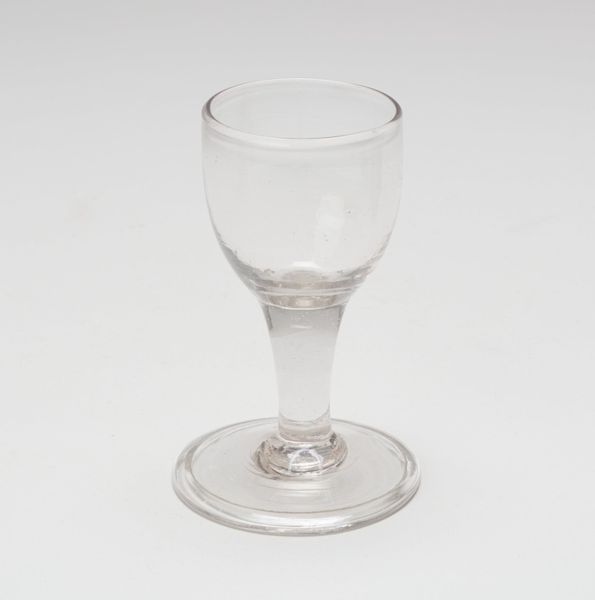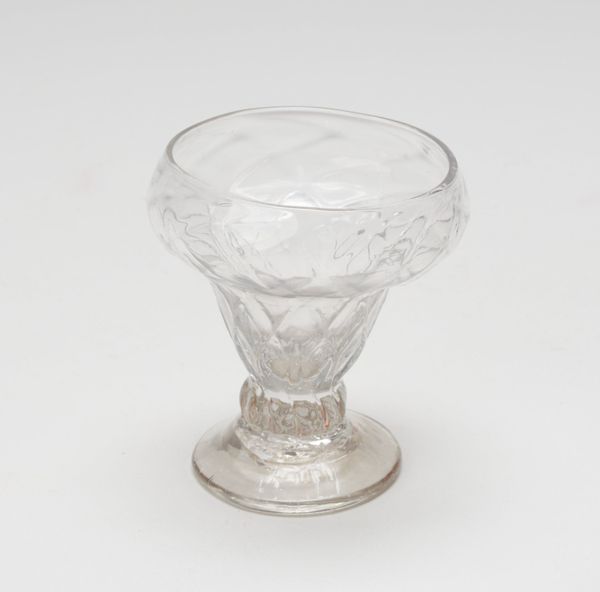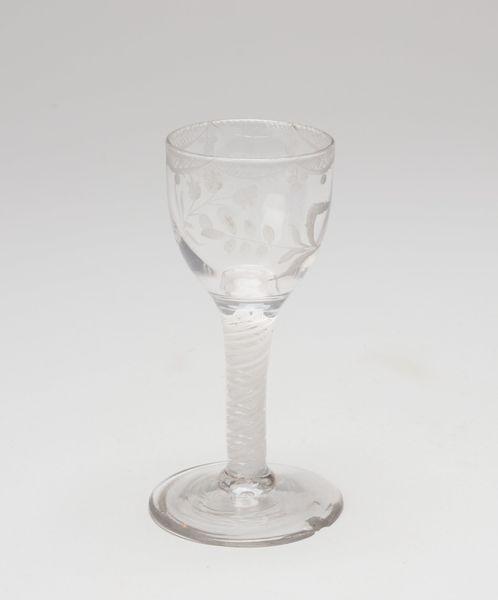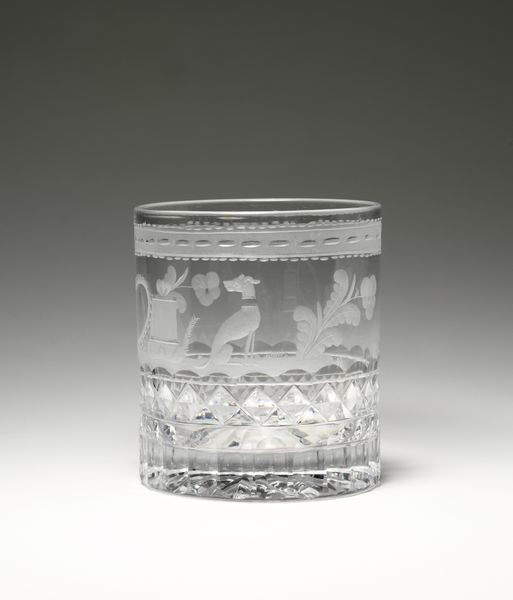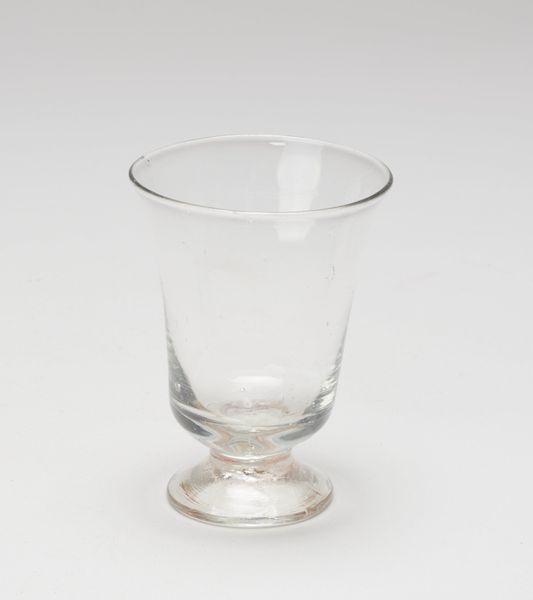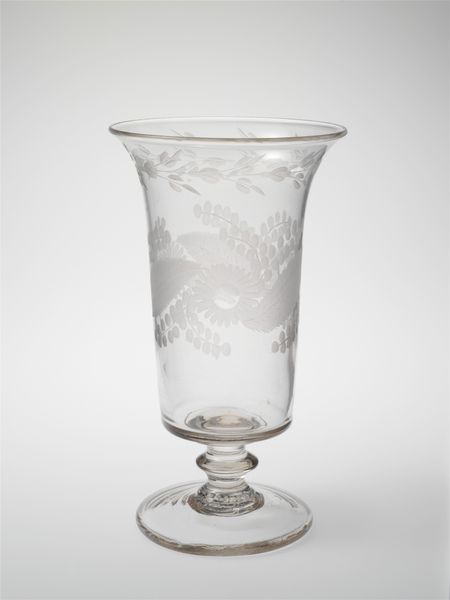
drawing, ceramic, glass
#
drawing
#
pottery
#
ceramic
#
glass
#
ceramic
Dimensions: 2 3/8 x 2 1/2 x 2 1/2 in. (6 x 6.35 x 6.35 cm)
Copyright: Public Domain
Editor: Here we have an 18th-century "Small Beaker," housed here at the Minneapolis Institute of Art. Looking at this piece, the floral design definitely catches my eye, there’s something so delicate about it. What do you make of it? Curator: I see this beaker as more than just a decorative object. Consider its potential place in society. Who would have owned such a piece? It's unlikely to be the working class; more probably someone with disposable income who valued aesthetics. What sort of gatherings might this beaker have graced? Was it purely decorative, or was it actually used? These are questions that invite us to imagine the social context of the time. Editor: That's a fascinating way to look at it! It makes me wonder if the flowers are symbolic? Curator: Possibly! What could flowers represent at that time? Could certain blooms signify specific political allegiances or social aspirations? These pieces served in society. Think how display cabinets would have suggested cultural knowledge in families. Even then, we saw value in being ‘cultured’. Editor: I hadn't thought of it as a marker of status. It's easy to get lost in the beauty and forget it was a commodity with a social meaning. Curator: Exactly. It prompts us to ask bigger questions about social structure. Even an everyday item offers this information. Editor: This really shifts my perspective, realizing it's not just about the art itself, but its role in society and who had access to it. Curator: Precisely! It is all about how artworks can tell us tales of how a society once worked.
Comments
No comments
Be the first to comment and join the conversation on the ultimate creative platform.
